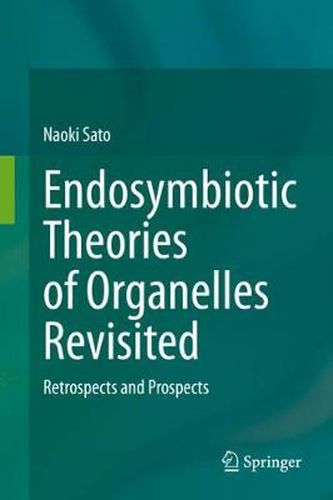Readings Newsletter
Become a Readings Member to make your shopping experience even easier.
Sign in or sign up for free!
You’re not far away from qualifying for FREE standard shipping within Australia
You’ve qualified for FREE standard shipping within Australia
The cart is loading…






This book re-examines the endosymbiotic theory, and presents various related theories and hypotheses since the first proposal in 1905 by a Russian biologist. It also demonstrates that Lynn Margulis’s contribution to the current endosymbiotic is less than sometimes thought, and presents a plausible idea on how the organelles were formed. Explaining that Margulis’s initial work did not intend to show the endosymbiotic origin of chloroplasts and mitochondria, the book discusses their endosymbiotic origin in the light of current biology with the help of clear visual images. Further, by including numerous historical facts and details of phylogenetic analyses using recent genomic data that are largely unknown to many in the field, it offers deep insights into the history of biology, phylogenetic analysis, and the new evolutionary thinking. 2017 was the 50-year anniversary of Margulis’s first paper in the Journal of Theoretical Biology, and 2020 will mark 50 years since the publication her famous work Origin of Eukaryotic Cells, and as such this book offers a timely reconsideration ofthe works of Lynn Margulis and the endosymbiotic origin of organelles.
$9.00 standard shipping within Australia
FREE standard shipping within Australia for orders over $100.00
Express & International shipping calculated at checkout
This book re-examines the endosymbiotic theory, and presents various related theories and hypotheses since the first proposal in 1905 by a Russian biologist. It also demonstrates that Lynn Margulis’s contribution to the current endosymbiotic is less than sometimes thought, and presents a plausible idea on how the organelles were formed. Explaining that Margulis’s initial work did not intend to show the endosymbiotic origin of chloroplasts and mitochondria, the book discusses their endosymbiotic origin in the light of current biology with the help of clear visual images. Further, by including numerous historical facts and details of phylogenetic analyses using recent genomic data that are largely unknown to many in the field, it offers deep insights into the history of biology, phylogenetic analysis, and the new evolutionary thinking. 2017 was the 50-year anniversary of Margulis’s first paper in the Journal of Theoretical Biology, and 2020 will mark 50 years since the publication her famous work Origin of Eukaryotic Cells, and as such this book offers a timely reconsideration ofthe works of Lynn Margulis and the endosymbiotic origin of organelles.